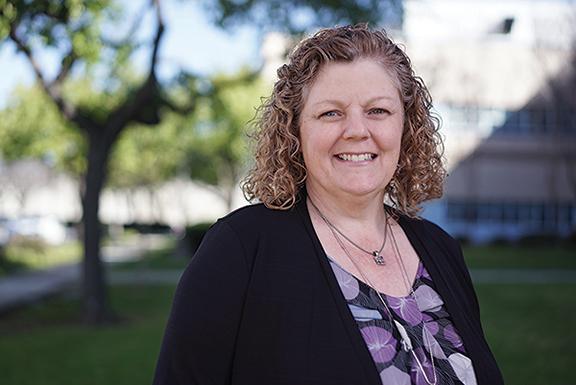Connie Brasil
Airspace Operations Simulation

Department of Psychology, Human Systems Integration
College of Social Sciences
Sponsor: NASA
Given the congested airspace above East Coast airports, flight delays in and out of New York airports are the norm. With so many flights arriving from the west coast, mid-west and internationally (“external flights”), minimal airspace and fewer departing slots are available for the arrival of “internal flights,” those coming into New York from what are considered local areas, like Washington D.C. or Boston.
Three thousand miles away in Mountain View, California, researcher Connie Brasil is creating and testing an integrated demand management system that could get more aircraft into New York-area airports on time and reduce both arrival and departure delays.
“It is possible for delay pain to be spread across the country. For example – instead of several individual localized planes getting an hour plus delay at the last minute, all flights can receive five- to 30-minute delay with plenty of advance notice to airlines and passengers alike. Strategic planning, using tools within the FAA’s Traffic Flow Management System integrated with the tactical powers of the FAA’s arrival Trajectory Based Flow Management systems, can help ease the congestion and delay problems within the New York airspace.”
One way to accomplish this is to modify the way existing traffic is scheduled into the New York Area and adjust departure times across the country to match the demand with the estimated airport capacity. Another way is to integrate the way time-based measuring tools are used. At present, air traffic controllers schedule arrivals based on planes’ positions at 400 miles.
However, as Connie explains, “A lot can change in 400 miles. If we moved that system in closer to the airport and checked planes’ positions at 400 miles and then again when they are 200 miles out, we would have a much more accurate reading of the order in which they will approach the airport and need to land. This would allow us to smooth out traffic flow, ensure departure slots for ‘internal flights’ and reduce delays.”
Student Research
 "In the simulated environment in our NASA lab, we can research and test futuristic
air traffic management concepts. It allows me to delve deeper into the brain and the
underlying mechanisms that control what we do and how we think. Where does the biology
stop and the psychology begin?"
"In the simulated environment in our NASA lab, we can research and test futuristic
air traffic management concepts. It allows me to delve deeper into the brain and the
underlying mechanisms that control what we do and how we think. Where does the biology
stop and the psychology begin?"
Gita S. Hodell, ’17
MS Research & Experimental Psychology Research Associate at NASA
 "My responsibilities are developing, debugging and maintaining an application that
is critical to Integrated Demand Management research. Although my degree will be in
Computer Science, I’ve been encouraged to use this opportunity to increase my aviation
knowledge and gain a grasp of the overall system."
"My responsibilities are developing, debugging and maintaining an application that
is critical to Integrated Demand Management research. Although my degree will be in
Computer Science, I’ve been encouraged to use this opportunity to increase my aviation
knowledge and gain a grasp of the overall system."
Sahil V. Motadoo, ’18 MS Computer Science
Student Research Assistant at NASA
菠菜网lol正规平台 Research Foundation Annual Report 2018